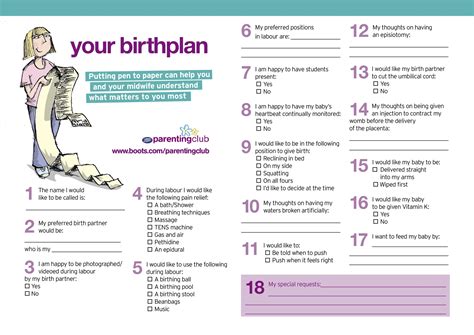Intro
Discover 7 essential third trimester tips for a healthy pregnancy, including prenatal care, birth planning, and managing symptoms like back pain and fatigue, to ensure a smooth transition into motherhood.
The third trimester of pregnancy is an exciting and often challenging time for expectant mothers. As the due date approaches, the body undergoes significant changes, and it's essential to prioritize health, comfort, and preparation for the arrival of the baby. In this article, we'll delve into the importance of the third trimester, its unique characteristics, and provide valuable tips for navigating this critical period.
As the third trimester begins, many women experience a mix of emotions, from excitement and anticipation to anxiety and uncertainty. The growing belly, changes in physical appearance, and concerns about motherhood can be overwhelming. However, with the right mindset, support, and knowledge, women can thrive during this period and set themselves up for a positive and empowering birth experience. Whether it's managing physical discomfort, preparing for breastfeeding, or building a birth plan, there are many aspects to consider during the third trimester.
The third trimester is a time of significant growth and development for the baby, with rapid weight gain, brain development, and preparation for life outside the womb. For the mother, it's a period of physical adjustment, emotional preparation, and logistical planning. From creating a birth plan and packing a hospital bag to attending prenatal classes and building a support network, there are many ways to prepare for the arrival of the baby. By understanding the unique characteristics of the third trimester and taking proactive steps to manage physical and emotional changes, women can navigate this period with confidence and excitement.
Physical Changes and Discomforts

Managing Back Pain and Sciatica
Back pain and sciatica are common complaints during the third trimester, caused by the growing belly and shifting center of gravity. To manage these symptoms, women can try the following: * Practice good posture and body mechanics * Take regular breaks to rest and stretch * Use supportive devices like belly bands or pillows * Engage in gentle exercise like prenatal yoga or swimming * Apply heat or cold packs to the affected areaEmotional Preparation and Support

Building a Support Network
Building a support network is crucial during the third trimester, providing emotional support, practical help, and a sense of community. Women can build their support network by: * Attending prenatal classes and meeting other expectant mothers * Joining online forums or social media groups for pregnant women * Connecting with friends and family members who have experienced pregnancy and motherhood * Hiring a doula or birth coach for emotional and practical supportNutrition and Hydration

Key Nutrients for the Third Trimester
Certain nutrients are particularly important during the third trimester, supporting the baby's growth and development and the mother's health. Key nutrients include: * Folic acid: supporting brain and spinal cord development * Iron: supporting the production of red blood cells * Calcium: supporting bone growth and development * Protein: supporting muscle growth and development * Omega-3 fatty acids: supporting brain and eye developmentBreastfeeding Preparation

Benefits of Breastfeeding
Breastfeeding offers numerous benefits for both mother and baby, including: * Optimal nutrition: providing essential nutrients and antibodies * Bonding: promoting a strong emotional connection between mother and baby * Convenience: providing a readily available and cost-effective source of nutrition * Health benefits: reducing the risk of infections, allergies, and diseasesBirth Planning and Preparation

Creating a Birth Plan
A birth plan is a personalized document outlining a woman's preferences for labor, delivery, and postpartum care. When creating a birth plan, women should consider the following: * Labor preferences: including pain management, positioning, and monitoring * Delivery preferences: including episiotomy, forceps, and cesarean section * Postpartum preferences: including breastfeeding, newborn care, and visitor policiesFinal Preparations

Packing a Hospital Bag
A hospital bag is an essential item for any expectant mother, providing a convenient and organized way to transport essentials to the hospital. When packing a hospital bag, women should include: * Comfortable clothing: including a nursing bra, underwear, and a bathrobe * Toiletries: including toothbrush, toothpaste, and hairbrush * Snacks and drinks: including granola bars, nuts, and water * Phone and charger: for staying connected with loved ones and capturing memoriesWhat are the most common symptoms of the third trimester?
+The most common symptoms of the third trimester include back pain, sciatica, swelling, fatigue, and Braxton Hicks contractions.
How can I manage back pain during the third trimester?
+Women can manage back pain during the third trimester by practicing good posture, taking regular breaks to rest and stretch, and using supportive devices like belly bands or pillows.
What are the benefits of breastfeeding?
+Breastfeeding offers numerous benefits for both mother and baby, including optimal nutrition, bonding, convenience, and health benefits.
As we approach the end of this article, we hope that you have found the information and tips provided to be helpful and informative. The third trimester is a unique and exciting time, full of challenges and opportunities for growth. By prioritizing health, comfort, and preparation, women can navigate this period with confidence and excitement, setting themselves up for a positive and empowering birth experience. We invite you to share your thoughts, experiences, and questions in the comments below, and to explore our other articles and resources for more information on pregnancy, childbirth, and parenting.
